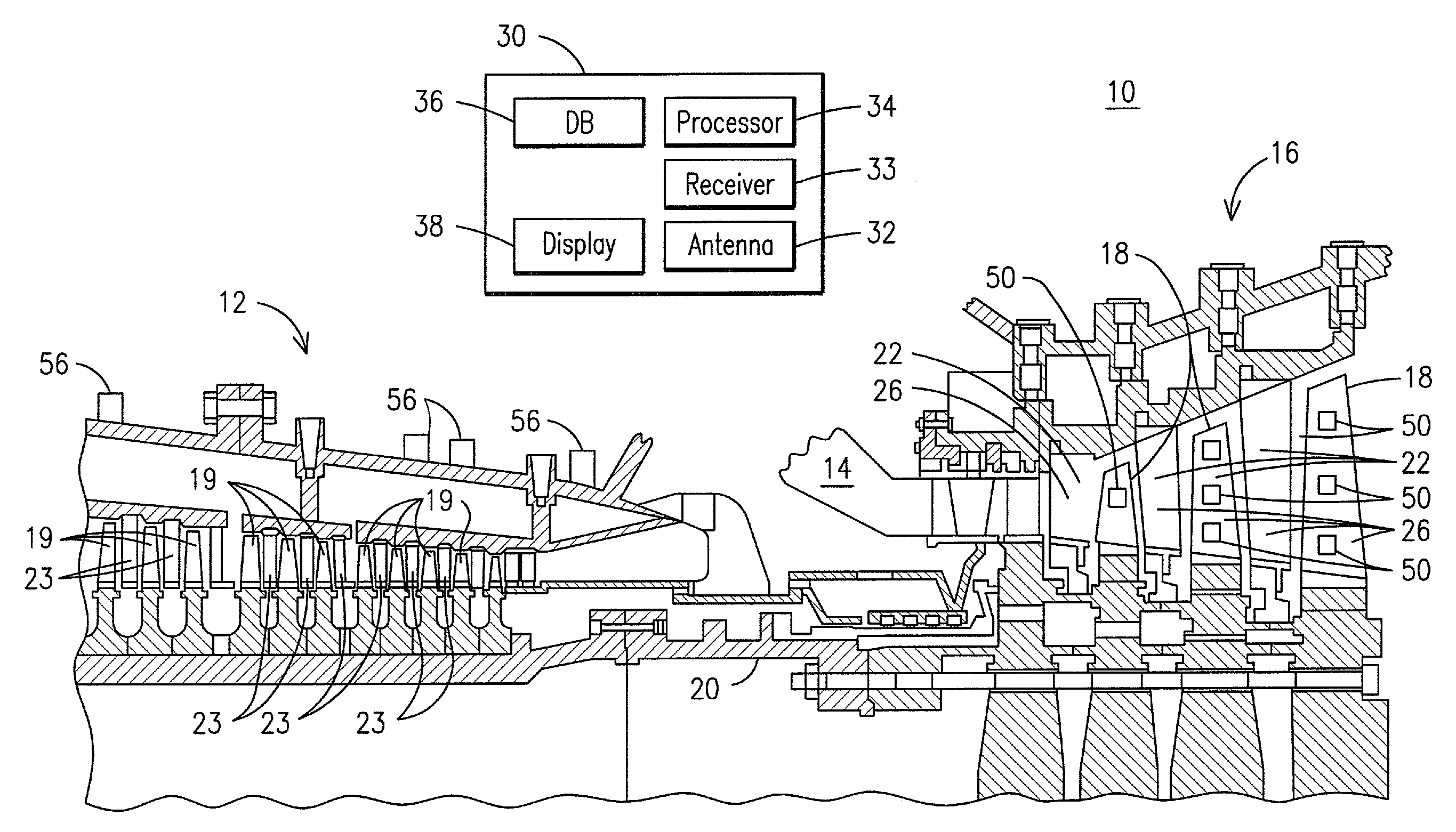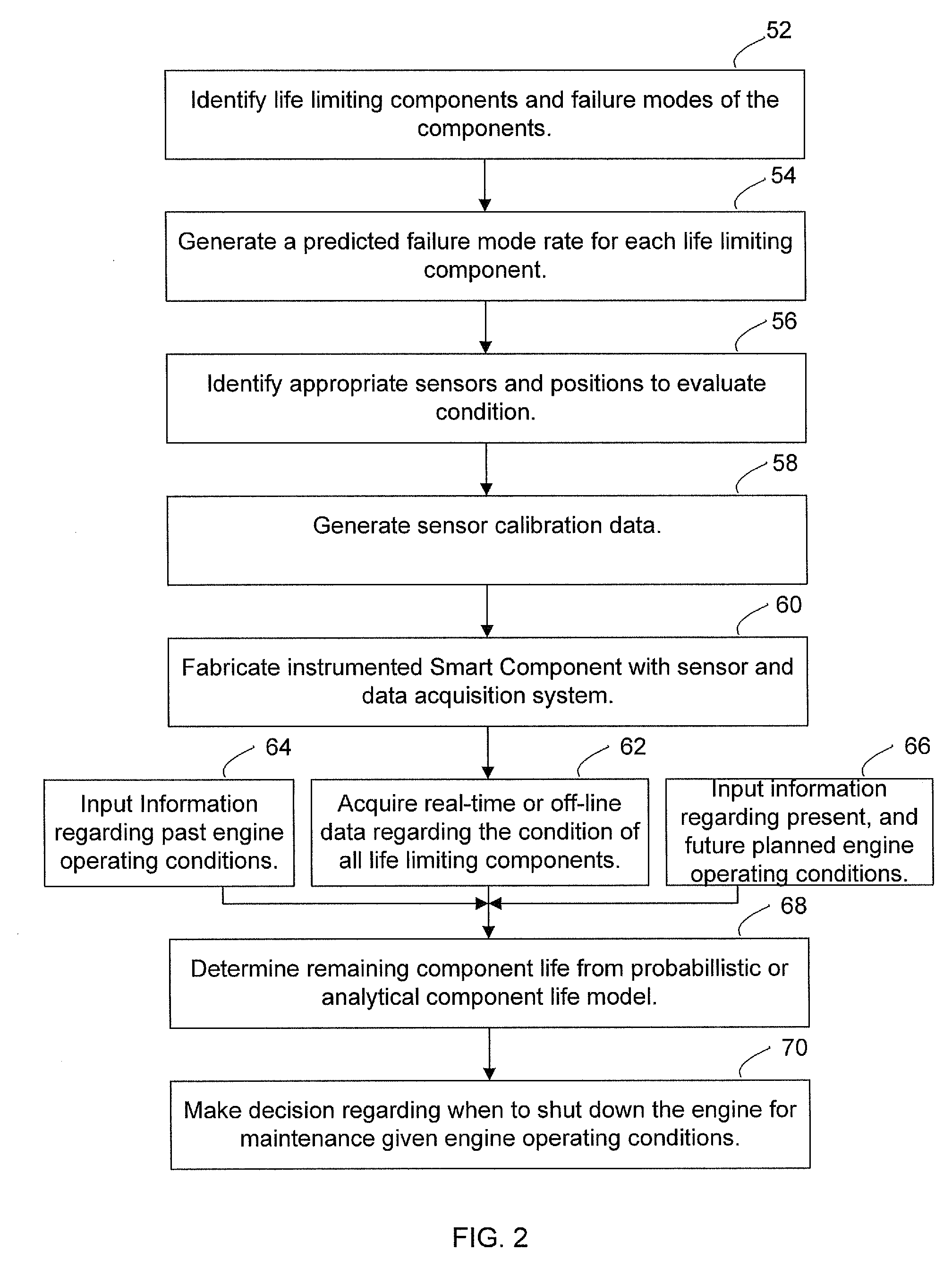Method for predicting a remaining useful life of an engine and components thereof
a technology for engine components and useful life, applied in the field of monitoring operating environments, can solve the problems of superalloy materials that cannot withstand extended exposure to the hot combustion gas of a current generation gas turbine engine without, and designers and operators have very little information regarding the internal status of turbine engine components during operation
- Summary
- Abstract
- Description
- Claims
- Application Information
AI Technical Summary
Problems solved by technology
Method used
Image
Examples
Embodiment Construction
[0027]FIG. 1 illustrates an exemplary combustion turbine 10 such as a gas turbine used for generating electricity as will be recognized by those skilled in the art. Embodiments of the invention may be used with combustion turbine 10 or in numerous other operating environments and for various purposes as will be recognized by those skilled in the art. For example, embodiments of the below described sensors and telemetry devices may be used in aircraft engines for monitoring temperature and heat flux in boilers, heat exchangers and exhaust stacks; determining insulation performance and degradation; determining pipe fouling; and evaluating vibrating component health. Embodiments may be used in the automotive industry for monitoring combustion chamber conditions, rotating components such as crankshaft, cams, transmissions and differentials, and determining suspension and frame integrity for heavy-duty vehicles. Embodiments may also be used in measuring strain and heat flux in tanks, por...
PUM
 Login to View More
Login to View More Abstract
Description
Claims
Application Information
 Login to View More
Login to View More - R&D
- Intellectual Property
- Life Sciences
- Materials
- Tech Scout
- Unparalleled Data Quality
- Higher Quality Content
- 60% Fewer Hallucinations
Browse by: Latest US Patents, China's latest patents, Technical Efficacy Thesaurus, Application Domain, Technology Topic, Popular Technical Reports.
© 2025 PatSnap. All rights reserved.Legal|Privacy policy|Modern Slavery Act Transparency Statement|Sitemap|About US| Contact US: help@patsnap.com



